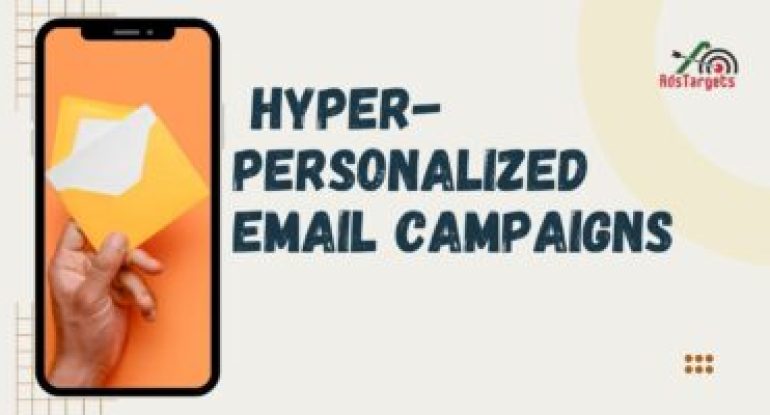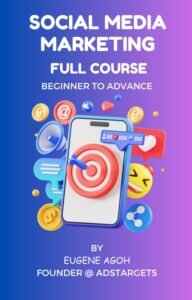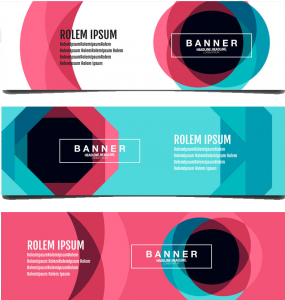Updated 21/04/2025
As an email marketer, you know how tough it is to get your message noticed in a crowded inbox. Everyone’s inbox is flooded with promotional emails, so standing out is key. That’s where hyper-personalized email campaigns come in. This approach takes personalization to the next level, tailoring every email to a recipient’s unique preferences, needs, and interests.
It’s not just a buzzword anymore—thanks to advancements in tech, the ability to create these highly personalized emails on a large scale is now within reach. In this post, we’ll dive into what makes hyper-personalized email campaigns different from the usual “Hey [Name]” emails, and show you how to take your email marketing to new heights by making every message feel like it was crafted just for the recipient.
Table of Contents
ToggleWhat is Hyper-personalization in Email Marketing?

Hyper-personalization takes email personalization to a whole new level by using advanced tech like artificial intelligence (AI), machine learning, and real-time data analytics. It’s not just about sticking a recipient’s name in the subject line anymore—it’s about delivering emails that feel like they were created specifically for them based on their behavior, preferences, and interests.
Imagine Amazon. They’ve got a massive database of customer info—everything from the products you’ve searched for, added to your cart, saved for later, or even just browsed for a few seconds. They use all that data to power their product recommendation engine, which predicts exactly what you’d want to see next. Ever noticed how you get emails about the exact type of sneakers you looked at last week or a follow-up suggesting accessories for something you already bought? That’s hyper-personalized email campaigns in action. It’s like Amazon is reading your mind, but really, it’s just smart tech making sense of your clicks and searches.
At scale, this level of personalization wouldn’t be humanly possible without AI doing the heavy lifting. AI reviews your subscriber data in real time, spots trends, and ensures every email matches what that person is actually interested in. Hyper-personalized email campaigns take into account way more than just past purchases—they can consider wishlist items, search filters, browsing history, and even how long someone hovered over a particular product.
Basically, this approach transforms your emails from “meh” to “whoa, how did they know I wanted this?” It’s not just marketing—it’s connecting with people on a level that feels relevant and useful, which is exactly how you get those click-through rates soaring. If you want to wow your subscribers and boost engagement, hyper-personalized email campaigns are the way to go.
What are the Key Benefits of Hyper-personalization?

Hyper-personalized email campaigns aren’t just a fancy trend—they’re a game-changer for boosting engagement and driving conversions. While regular personalization already helps, hyper-personalization takes your email marketing efforts to a whole new level. Think better ROI, stronger relationships with your audience, and consistent results that actually move the needle. Let’s dive deeper into the perks:
#1. Understanding Your Customers Inside Out
To pull off hyper-personalized email campaigns, you need to gather and analyze a ton of customer data—think purchase history, browsing habits, preferences, and even behaviors like the time they open emails. All of this helps you build a super-detailed profile of each customer.
This isn’t just about knowing what they like; it’s about predicting what they might like and anticipating their needs. For example, if someone has been eyeing a pair of headphones on your website, you can send them an email featuring that product with a discount or even suggest similar ones. When you understand your audience this well, they’ll feel like you get them—and that’s how you win trust and loyalty.
#2. Targeting Customers with Laser Focus
Once you’ve got all that juicy data, it’s time to put it to work. Hyper-personalized email campaigns let you craft super-specific subject lines and recommendations that hit all the right notes. For example, instead of “Check Out Our Latest Deals,” your subject line could be “Hey Alex, these fitness trackers are calling your name!”
You’re not just guessing what they’ll like—you’re delivering content that’s actually relevant. Whether it’s product recommendations, a personalized discount, or a reminder about something they left in their cart, hyper-personalization ensures you’re sending emails that people want to open.
#3. Higher Chances of Success
When you send the right message to the right person at the right time, magic happens. Hyper-personalized email campaigns significantly boost key metrics like open rates, click-through rates, and conversions. Customers are more likely to engage because your emails aren’t just generic—they feel intentional, thoughtful, and relevant.
Plus, when people interact with your emails more, it improves your email deliverability. That means fewer emails landing in spam folders and more reaching their intended inboxes. It’s a win-win for both engagement and visibility.
#4. Better Customer Experience = Happier Customers
Nobody likes irrelevant emails clogging up their inbox. With hyper-personalized email campaigns, you’re only sending content that actually matters to your subscribers. This creates a better overall experience—one where they see your brand as helpful, not pushy.
When customers get emails that align with their interests, they’re less likely to hit “unsubscribe” or, worse, mark your emails as spam. Instead, they’ll associate your brand with value and relevance, which strengthens your reputation and builds trust over time.
#5. Predicting What Customers Want Before They Do
Thanks to AI and machine learning, modern email marketing platforms can help you predict customer behavior and send emails at just the right moment. Tools like Email Industries use real-time data to analyze patterns and recommend when to hit send.
For instance, if a subscriber tends to open emails during their lunch break or late at night, the system will suggest timing your email accordingly. And it doesn’t stop there—AI can predict what products they’re most likely to buy next or which offers will grab their attention. This kind of insight keeps your emails one step ahead, making them feel timely and personalized.
In a nutshell, hyper-personalized email campaigns are all about making every subscriber feel like your emails were written just for them. When done right, this approach boosts engagement, drives conversions, and builds a stronger connection between your brand and your audience. And honestly? It’s the best way to make your emails stand out in today’s overcrowded inboxes.
What are Some Hyper-personalized Email Examples?
Hyper-personalized email campaigns are like the VIP treatment your customers didn’t know they needed but will absolutely love. By tailoring your emails to their individual preferences, behaviors, and even timing, you create messages that resonate on a personal level. Here are five awesome examples of how you can put hyper-personalization to work in your email strategy:
#1. Customized Offers That Hit the Spot
Picture this: A subscriber’s been browsing sneakers or wallets on your site. Instead of sending a generic “50% off sale!” email, you hit them with a super-specific offer—like a discount on the exact type of sneakers or wallets they were checking out.
Hyper-personalized email campaigns let you use data like browsing history, purchase habits, and even location to craft these laser-focused offers. It’s not just about discounts; it’s about making your audience feel like, “Wow, this deal is made for me.” When your offers match their interests, you’re way more likely to turn window shoppers into buyers.
#2. Spot-On Product Recommendations
Ever seen those “We think you’ll love these” emails and found yourself clicking through? That’s the magic of hyper-personalized product recommendations. By tapping into subscriber data like past purchases, wishlist items, and even what similar users are into, you can craft a curated list of products they’ll actually want to buy.
But don’t stop there. Timing is everything! Hyper-personalized email campaigns can predict when someone is most likely to shop—whether it’s payday, late-night scrolling, or post-holiday sales—and send recommendations right on cue. It’s all about being in the right inbox at the right time with the right stuff.
#3. Birthday Emails That Feel Like a Gift
Everyone loves being remembered on their special day, and hyper-personalized email campaigns make birthday (or anniversary) emails feel like a true celebration. You’re not just sending a generic “Happy Birthday!” message—you’re offering exclusive deals or discounts tailored to what they love.
For instance, if your customer is into fitness gear, send them a personalized discount on yoga mats or gym shoes for their birthday. Add a warm, human touch by including their name and maybe even a countdown to redeem their birthday surprise. These little details make your brand feel thoughtful and authentic.
#4. Loyalty Programs That Feel Personal
Loyalty programs are cool, but hyper-personalized loyalty programs? Next level. Instead of a one-size-fits-all approach, use customer data to design rewards that actually align with their preferences and spending habits.
Let’s say someone frequently buys skincare products. You can tailor the redemption rules to offer extra points or perks on their favorite moisturizers. By adding personal touches like “You’ve earned double points on your go-to products!” you make your subscribers feel valued—and more likely to stick around.
#5. Dynamic Content That’s Always On Point
Dynamic emails are the ultimate power move for hyper-personalized email campaigns. These are real-time, data-driven messages that adapt based on the customer’s actions (or lack thereof).
For example, if someone abandons their cart, you can swoop in with a reminder email that highlights the items they left behind—maybe even sweeten the deal with a limited-time discount. Post-purchase updates are another winner; thank them for their order and suggest complementary products they might love.
Dynamic content is also great for keeping your emails fresh and relevant. If you’re targeting a subscriber in a specific city, you can include location-based updates, like weather-appropriate clothing or events happening nearby. It’s all about making every email feel timely and relevant.
Hyper-personalized email campaigns are the secret sauce for building stronger connections with your audience. Whether it’s a tailored offer, a thoughtful birthday shoutout, or a timely reminder to complete a purchase, these campaigns show that you’re not just another brand spamming their inbox—you’re a brand that gets them. And when people feel understood, they’re way more likely to engage, buy, and stick around for the long haul.
How is Hyper-personalization Different from Personalization?

Traditional personalization and hyper-personalization may sound like they’re cut from the same cloth, but trust me—they’re playing in totally different leagues. If personalization is the warm “Hi [First Name]” in your emails, hyper-personalization is rolling out the red carpet with a message that feels like it’s straight outta your customer’s mind. Here’s how they stack up:
#1. Data Depth: Skimming vs. Deep Diving
Personalization works off the basics—age, gender, location, maybe your customer’s name. It groups people into broad categories and tailors emails to those segments. Think: “Hey Millennials in [City], check out this sale!”
Hyper-personalized email campaigns, though? They’re the pros at digging deep. Instead of stopping at demographic details, they analyze everything—browsing history, past purchases, real-time actions, social media activity, and even location data. It’s like crafting a custom Spotify playlist, but for your inbox.
#2. Recommendations: Generic vs. Spot-On
Personalization can suggest “people like you also bought this” kinda stuff. It’s better than nothing, but it’s not exactly jaw-dropping.
Hyper-personalization, on the other hand, takes it a step further. Using data analytics and AI, it predicts exactly what your subscribers want—before they even know it themselves. Did they add running shoes to their cart but didn’t check out? A hyper-personalized email campaign might send a follow-up featuring those shoes and matching socks they’ll love. It’s specific, thoughtful, and incredibly effective.
#3. Segmentation: Groups vs. Individuals
Traditional personalization groups people into large buckets—Millennials, moms, gadget geeks—you get the idea. While it’s helpful, it’s still painting with broad strokes.
Hyper-personalized email campaigns ditch the buckets and focus on micro-segmentation. That means treating every subscriber like a one-of-a-kind individual. You’re not just emailing “Moms in NYC,” but “Moms in NYC who recently bought yoga mats and are eyeing organic smoothie recipes.” It’s personalization turned up to 11.
#4. Predictive Power: Past vs. Future
With traditional personalization, you’re working with what you know—past behavior. It’s like looking in the rearview mirror: helpful, but limited.
Hyper-personalization shifts gears entirely. Using AI and machine learning, it predicts future behavior and needs. Not only does it know what your subscribers have done, but it also guesses what they’re about to do. For instance, if a subscriber browses summer dresses and sunglasses, your hyper-personalized campaign can recommend beach bags or sandals before they even think to search for them.
Quick Recap: Traditional Personalization vs. Hyper-personalization
| Personalization | Hyper-personalization |
| Uses basic data (name, age, location) | Analyzes detailed data (browsing history, real-time behavior, etc.) |
| Provides generic product recommendations | Suggests super-specific, highly relevant products |
| Groups customers into broad categories | Treats every customer as unique through micro-segmentation |
| Focuses on past behavior | Predicts future actions and needs |
So, while personalization is a solid step in the right direction, hyper-personalized email campaigns are the big leagues. They’re all about making your subscribers feel like every email was crafted just for them. It’s not just marketing—it’s building a genuine connection. And trust me, when people feel seen, they engage. That’s the magic of hyper-personalization.
How to Nail Hyper-Personalized Email Campaigns
Building a killer hyper-personalized email campaign is a bit more work than just slapping someone’s name at the top of an email. It’s all about digging deeper, making smarter use of data, and letting your emails feel less like marketing and more like a one-on-one conversation. Here’s the play-by-play:
#1. Collect All the Juicy Data
First things first—you can’t hyper-personalize without data. And not just the “basic” stuff like names and locations. Nope, we’re talking deep dives into psychographics and behavior:
Psychographic data: What are your customers into? Their interests, hobbies, attitudes, values—this helps you know who they are.
Behavioral data: What are they doing online? Think purchase history, website clicks, social media engagement, and browsing habits.
Where do you get this treasure trove of insights? Everywhere—customer surveys, social media interactions, purchase patterns, and website activity. To make your life easier, tools like Segment (a Customer Data Platform, or CDP) can collect, organize, and unify all this info into a single customer profile. It’s like putting together the ultimate cheat sheet for your audience.
Pro Tip: The more detailed your data, the more you can customize your hyper-personalized email campaigns.
#2. Analyze the Data Like a Pro
Collecting data is one thing. Knowing what to do with it? That’s where the magic happens. The secret sauce here is artificial intelligence (AI), which can dig into all that data and surface the insights you’d probably miss on your own.
AI tools can tell you:
What products or services your customers are most likely to want.
Their favorite artists, genres, or even the mood of content they vibe with.
How does this work?
#1. Clean the data: Get rid of duplicates, fill in the blanks, and organize everything.
#2. Feature engineering: Translate raw data into meaningful attributes—like purchase frequency, preferred price range, or even customer sentiment based on reviews.
#3. Train your AI model: This involves teaching it to recognize patterns, trends, and preferences. The more data it processes, the smarter it gets.
#4. Evaluate and tweak: AI isn’t perfect out of the gate. Test its output and fine-tune as needed.
Once trained, your AI can even do predictive analytics—forecasting what your customers will want in the future. Imagine being able to email them with the exact thing they’re thinking about buying. That’s the kind of edge hyper-personalized email campaigns bring.
#3. Put the Data to Work in Your Emails
Data is cool, but if it just sits in a dashboard, what’s the point? Here’s where you connect the dots: import all those insights into your email marketing platform and start weaving them into your campaigns.
For example:
If your data shows a customer abandoned their cart, your email could say, “Hey [Name], still thinking about [Product]? Here’s 10% off to make it yours!”
If a customer frequently buys skincare, your email could recommend their next favorite product based on their history.
Platforms like Mailmodo make this seamless by integrating with tools like Segment. You can easily feed analyzed data into your email templates and use it for hyper-personalized campaigns.
Pro Tip: Use dynamic content to make emails feel extra custom. It’s not just about personalizing the text—think personalized product images, special offers, or even location-specific details.
#4. Automate the Heck Out of It
Now that you’ve got all this data-powered personalization going, let’s make it hands-off. Automation is your best friend when it comes to hyper-personalized email campaigns. It ensures that your emails go out at the right time, to the right person, with the right message—without you having to babysit the whole process.
Here’s how automation shines:
#1. Triggered emails: These are emails sent based on specific customer actions. Did someone leave an item in their cart? Boom, they get a reminder email. Did they sign up for your newsletter? They get a welcome sequence tailored to their interests.
#2. Time-based campaigns: Want to send a birthday email with a discount? Automation’s got you covered.
Tools like Mailmodo let you set up customer journeys with custom triggers. For instance, if a customer adds sneakers to their cart but bails before checkout, you can automatically send them an email featuring that exact pair, plus a nudge like, “Your new kicks are waiting for you!”
Hyper-personalized email campaigns are all about making your audience feel seen. It’s not just about throwing their name in the subject line—it’s about showing them that you know what they want, what they care about, and what they’re likely to do next. By collecting rich data, analyzing it with AI, using it creatively in your emails, and automating the whole process, you can create campaigns that feel less like spam and more like a conversation.
Trust me, when people feel like your email is talking to them, not at them, they’re way more likely to click, engage, and convert.
What are the Top Strategies for Personalized Email Marketing?

Personalized email marketing is totally transforming how businesses connect with their audience. By using smarter strategies and leveraging data, you can craft emails that feel less like generic spam and more like a meaningful conversation. Want to improve your email game? Check out these killer strategies for creating hyper-personalized email campaigns that actually work.
#1. Segment Your Email List Like a Professional
Let’s get real—blasting the same email to everyone is like trying to sell sunscreen in Alaska during winter. You need to break down your subscriber list into smaller, laser-focused groups. This process, called email list segmentation, lets you target people based on specific factors like:
Demographics (age, gender, income level).
Location (local deals, weather-based recommendations).
Behavior (how often they visit your site, what they buy).
Purchase history (what they’ve bought or are likely to buy again).
By segmenting your list, you can craft emails that actually matter to your readers. For example, if you’re a travel company, why send international flight deals to someone who only books weekend road trips? Instead, hook them up with exclusive discounts on domestic getaways. Hyper-personalized email campaigns are all about making each recipient feel like your message was crafted just for them.
#2. Nail Those Subject Lines and Content
Let’s face it—the subject line is your first impression, and you only get one shot. A killer subject line that feels personalized is your ticket to grabbing attention (and boosting open rates). Stats even show personalized subject lines can up your open rate by a whopping 26%.
Here’s how you can make them pop:
Include their name or location. (“Hey Sarah, Ready for 50% Off in LA?”)
Mention something they recently showed interest in. (“Your Dream Shoes Are Back in Stock!”)
But don’t stop there—what’s inside the email matters even more. Go beyond cookie-cutter messages and pack your content with dynamic elements. These are email sections that change based on the subscriber’s preferences or behavior.
Some ideas:
#1. Personalized product recommendations based on what they’ve browsed or bought.
#2. Tailored offers, like discounts on their favorite brands.
#3. Content that matches their hobbies, whether that’s “Best Hiking Gear of 2025” or “Must-Have Gadgets for Tech Lovers.”
For example, if someone just checked out running shoes on your website, don’t hit them with an email about winter boots. Show them trending running gear or accessories to pair with their new kicks. That’s how hyper-personalized email campaigns hit differently.
#3. Use Behavioral Triggers and Automation
Here’s where email marketing gets extra spicy—automation and behavioral triggers. Instead of manually sending emails, let your tools handle it for you. Triggers are actions or milestones that automatically set off specific emails. Think:
Someone just signed up? Send them a warm, personalized welcome email.
Added something to their cart but didn’t buy? Hit them with an abandoned cart reminder featuring the product they almost bought.
Just made a purchase? Send them a “thank you” email with recommendations based on their order.
For example, imagine you’re running an online store. A customer buys a camera from you. A few days later, they get an email that says:
“Thanks for snagging the Canon Mark II! Need a tripod or extra memory cards to go with it? Check out our curated picks just for you.”
This kind of automation saves you tons of time while keeping things crazy personalized. Hyper-personalized email campaigns shine here because they’re not just timely—they’re also relevant and helpful, making people way more likely to engage.
Why This Works
People love feeling seen. A generic “Dear Customer” email won’t cut it anymore. When you send emails tailored to what your subscribers care about—whether it’s their preferences, behavior, or recent interactions—they’re more likely to open, click, and convert. By focusing on segmentation, personalized content, and automation, your email marketing will stop feeling robotic and start driving real results.
Remember: hyper-personalized email campaigns aren’t just a buzzword—they’re the secret sauce for connecting with your audience in a way that feels authentic and valuable.
What are the Ways to Implement and Manage Email Personalization?
Let’s be real—creating hyper-personalized email campaigns that feel like a one-on-one convo takes more than just slapping a subscriber’s name in the subject line. It’s all about having the right strategy, tools, and a bit of finesse. Here’s how to make your personalized email game not just good, but legendary.
#1. Pick the Right Tools for the Job
First things first—stop making life harder than it needs to be. Get yourself a solid email marketing tool that does the heavy lifting for you. Platforms like Campaign Monitor are designed to simplify everything from creating dynamic content to setting up automated email workflows.
These tools are a lifesaver when you’re managing hyper-personalized email campaigns. Think about it:
#1. Want to send a welcome email series that feels tailored to each subscriber? Automation has your back.
#2. Need to plug in dynamic content that changes based on a user’s preferences or past purchases? Done in seconds.
#3. Looking to integrate your email campaigns with other apps, like your CRM or e-commerce platform? Easy peasy.
With the right tool, you’re not just managing your campaigns—you’re scaling them like a pro. Plus, these platforms give you insights into your emails’ performance, so you know what’s working and what’s flopping.
#2. Define and Track Your KPIs Like a Boss
You can’t just fire off emails and hope for the best. You need to know if your hyper-personalized email campaigns are actually doing their job. That’s where KPIs (key performance indicators) come in.
Here are some KPIs you need to track:
#1. Open rates: Are people even clicking on your emails? If not, your subject lines might need a little TLC.
#2. Click-through rates (CTR): Are your links getting clicks? If not, maybe your content isn’t hitting the mark.
#3. Conversion rates: Are those clicks turning into actions—like purchases, signups, or downloads?
#4. Revenue generated: Let’s get real—money talks. How much are your emails actually bringing in?
Make it a habit to check these metrics regularly. If something isn’t working, tweak it. Maybe A/B test your subject lines or try a different call-to-action. The goal is to keep refining your approach until you’re hitting those targets like a champ.
#3. Keep It Personal Without Getting Creepy
There’s a fine line between “wow, this brand gets me” and “uhh, how do they know that about me?” Personalization is awesome, but you’ve gotta respect boundaries.
Here’s how to strike that balance:
Be upfront about data collection: Tell your subscribers what info you’re collecting and why. For example, if you’re asking for their location, explain it’s so you can send them local deals or events. Transparency builds trust.
Stick to what’s relevant: Use only the data you need to make your emails better. No one wants a brand tracking every move they make online.
Highlight the benefits of personalization: Show your audience how hyper-personalized email campaigns can make their lives easier, whether it’s exclusive discounts, tailored content, or product recommendations they’ll actually love.
For example, instead of saying, “We noticed you’ve been searching for yoga mats at 2 a.m.,” try, “Hey [Name], check out these top-rated yoga mats trending in your area!” Same personalized vibe, but way less creepy.
Why This Approach Works
The secret sauce to managing hyper-personalized email campaigns is all about balancing efficiency, effectiveness, and empathy. You need the right tools to automate and scale, the right metrics to track progress, and the right attitude to respect your subscribers’ boundaries.
When done right, personalized email marketing isn’t just about better open rates or higher conversions—it’s about creating genuine connections with your audience. So, take these steps, level up your strategy, and watch your email campaigns go from “meh” to “wow.”.
Conclusion
In today’s world, people aren’t just expecting personalization—they’re straight-up demanding it. And honestly, why wouldn’t they? Everyone wants to feel like brands actually get them. That’s where hyper-personalized email campaigns come in clutch.
This strategy doesn’t just set you apart from the competition—it puts you miles ahead. Hyper-personalized email campaigns let you deliver the kind of customer experience people rave about. You’re not just sending emails; you’re building connections that make your subscribers feel seen and valued.
And here’s the kicker—it’s not just about warm fuzzies. When done right, hyper-personalization skyrockets your engagement rates. People are way more likely to open, click, and convert when they feel like the message was made just for them. Whether it’s tailored recommendations, exclusive offers, or even a simple “Hey [Name], we think you’ll love this!”—it all adds up to better results and happier customers.
So, if you’re looking to crush it in the email marketing game, hyper-personalized email campaigns aren’t just an option—they’re the move. Give your audience the experience they deserve, and watch those open rates, clicks, and conversions soar. The competition won’t know what hit them.








